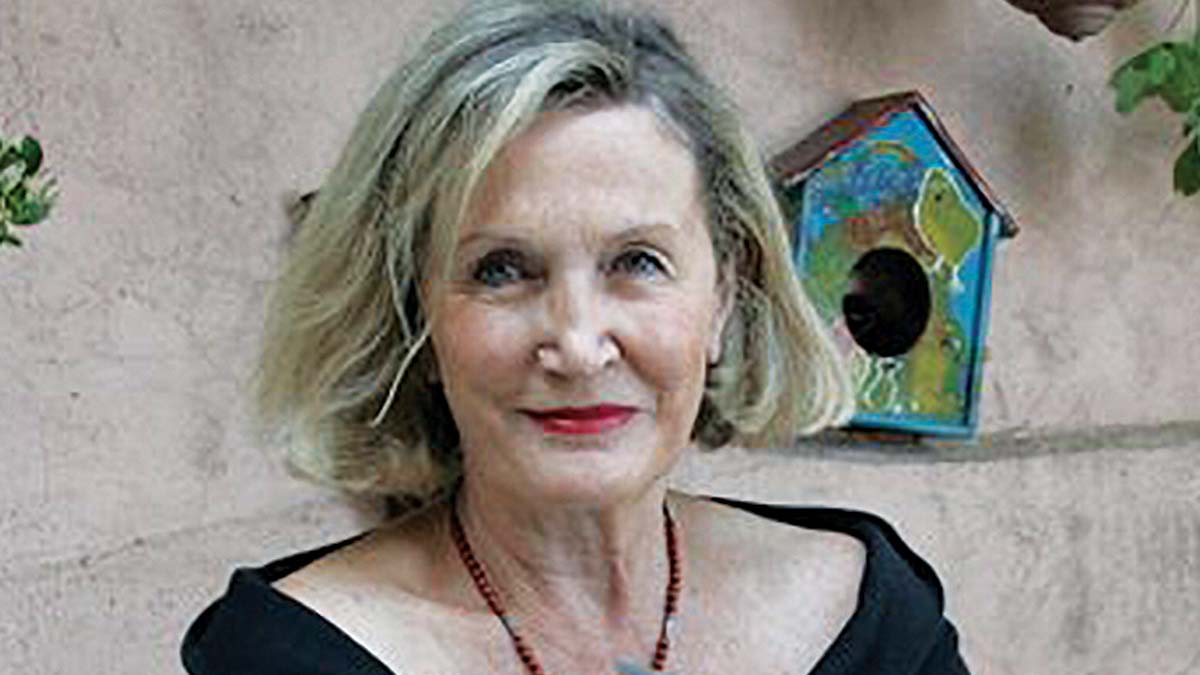AS I SEE IT
MARIANNE HERON
The June full moon is known as the strawberry moon because it coincides with the strawberry season. This year the midsummer moon was a startling shade of strawberry, nothing to do with fruit solidarity though. The colouration was due to smoke from the unprecedented wild fires in Canada which had drifted down to Europe as well as veiling New York.
While wild fires are a natural occurrence in hot dry seasons, this year they started early in Canada burning an area half the size of Ireland, giving rise to the term Pyrocane. This hurricane of fire is exacerbated by human induced climate change and that blushing moon shining down on our green island is a reminder of the potentially apocalyptic nature of that change.
There are smaller reminders that all is not well with nature. Towards the end of April I waited in vain for the arrival of welcome visitors because the swallows and sand martins never came. The reason? Their local nesting sites are gone, lost to the sweep of development. We need more homes in Ireland but birds need theirs too.
I haven’t heard the Spring call of a cuckoo or the grating call of a corncrake for years. It’s hardly surprising, given that 63% of our bird species in Ireland are in decline, according to Birdwatch Ireland, with the average rate of decline world-wide 50%.
Ireland has 31,000 species of creatures but, despite our clean green image, many are under threat due to reduction of habitat and environmental degradation. Among the Top 10 at risk are the Atlantic salmon and the curlew.
”O curlew, cry no more in the air, Or only to the water in the West;” wrote Yeats of the bird’s haunting cry. Soon that cry may be heard no longer in Ireland for the bird’s population has declined by 97% in 20 years.
The number of our pristine rivers is down from 500 to just 20, while 85% of EU protected habitats have unfavourable status according to the Biodiversity Working Group while half of our native plant species are in decline according to the Plant Atlas.
The European Court of Justice has just ruled that the Republic of Ireland has broken the EU Habitats directive EU nature laws by failing to protect hundreds of sites, finding that the Government had failed to designate Special Areas of Conservation for 217 of 423 sites across the country.
The urgent question is what can we do both nationally and individually to halt this loss of biodiversity and the march towards extinction?
The problem is that we aren’t doing enough or acting effectively. “We are still failing to protect habitats in 2023,” says Dr Florence Renou Wilson research scientist and lecturer UCD. “People talk about destruction of the Amazon forest, but we have done exactly the same in Ireland.”
At national level the protective measures in Ireland’s fourth National Biodiversity plan have been criticised for lacking teeth and accountability. At EU level, the Nature Restoration Law, which deals, among other things, with rewetting bogs, narrowly escaped defeat and passed last week in a watered down form ( sorry!) which hasn’t gone down well with farmers on the one hand or environmentalists on the other.
Among the criticisms are that the measures to protect habitats will increase the costs, increase food insecurity and that they are unfair to rural communities. The environmentalists’ argument is that we can’t afford not to protect nature and that the decline in species like bees and pollinators will threaten food production.
It’s all too easy to point the finger and blame someone for failure to safeguard nature. But at the end of the day – and it will literally be the end of the day if we fail take more care – we all need to become eco warriors and take responsibility. Restoring nature depends on us all not only nationally but how much individuals and local groups protect their environments and how much we are prepared to make the kind of changes which make a difference.
Given a bit of consideration nature can be remarkably resilient. Witness the surprise appearance of a rare orchid on the lawns at Trinity College which reappeared when mowing was stopped there.
In my home part of the lawn has returned to meadow where butterflies bees and pollinators are dancing among flowering grasses, plants like dog daisies and some species I have never seen before.
Nature works, given half a chance.

















